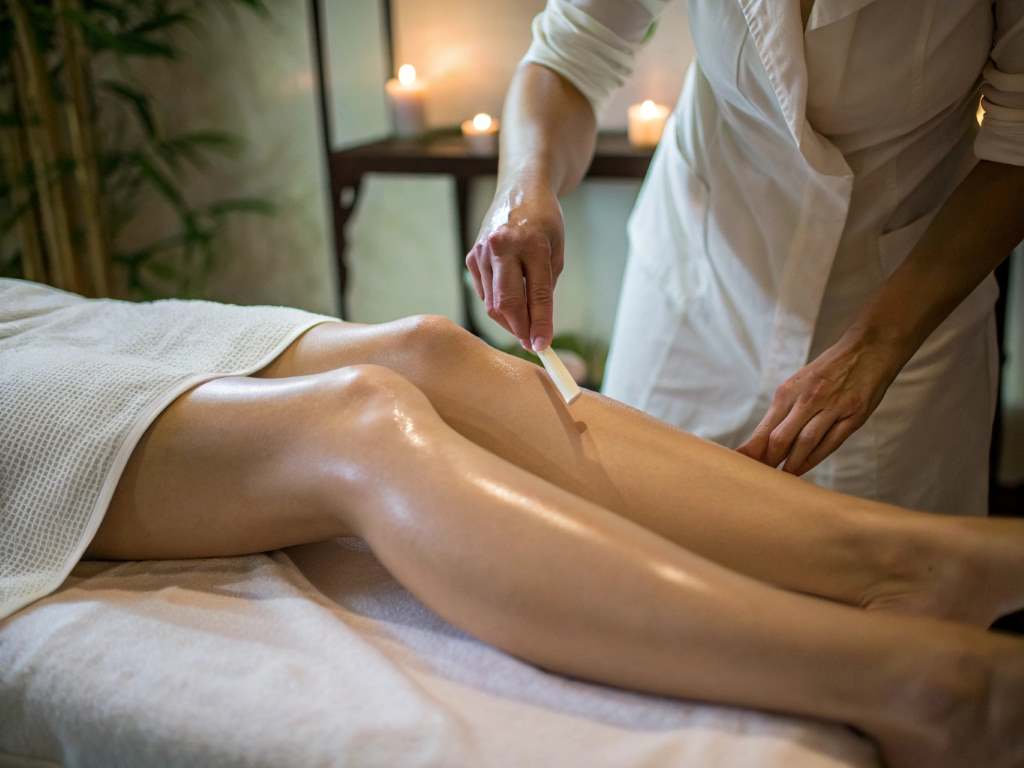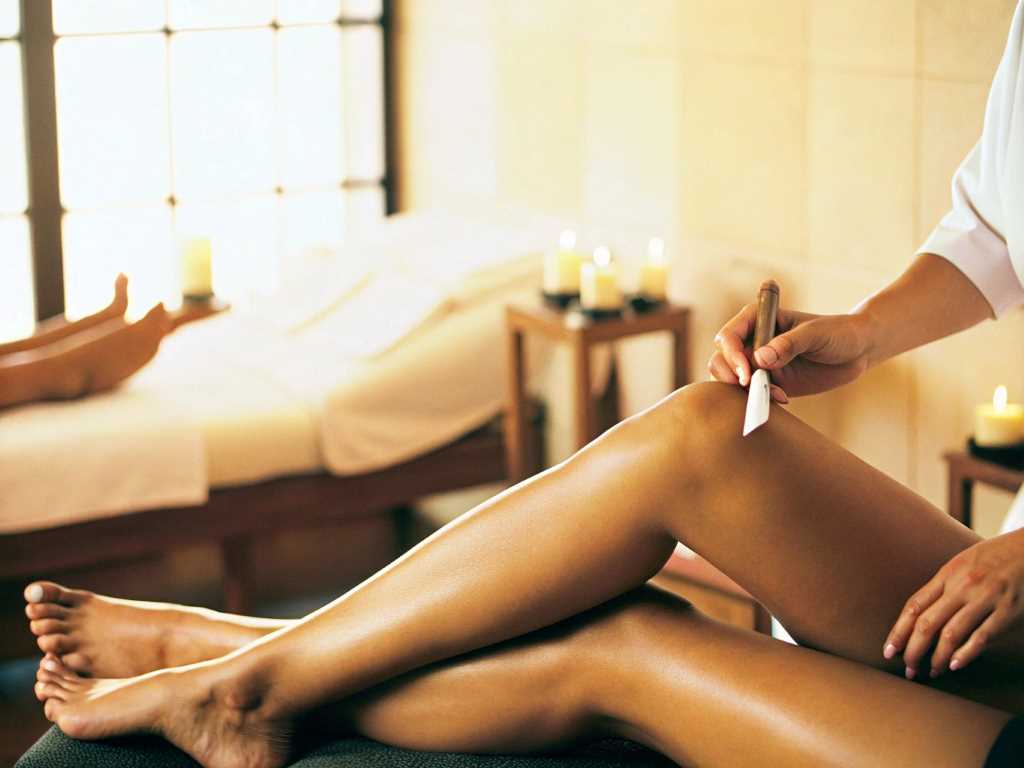Waxing promises silky-smooth skin, but what happens when ingrown hairs crash the party? Those pesky, painful bumps can turn a flawless waxing session into a frustrating ordeal. Fortunately, with the right knowledge and proper aftercare, you can keep your skin smooth, ingrown-free, and happy. This article dives into effective strategies to prevent and treat ingrown hairs, using insights from a comprehensive dataset of waxing-related topics. Whether you’re a waxing newbie or a seasoned pro, you’ll find practical tips to maintain healthier skin and avoid common pitfalls. Ready to banish those bumps for good? Let’s explore how! We suggest visiting the laser hair removal in midtown Manhattan.
What Are Ingrown Hairs and Why Do They Happen?
Ingrown hairs occur when a hair curls back or grows sideways into the skin instead of upward. This often leads to hair follicle inflammation, resulting in red, itchy bumps or even an ingrown hair cyst. According to dermatological studies, about 1 in 10 people experience ingrown hairs after hair removal, especially in areas like the bikini line or thighs where hair is coarse or curly. The dataset highlights ingrown hair as a top concern, mentioned 10 times, underscoring its prevalence among waxing enthusiasts. Visit the best anti aging facial in midtown Manhattan to get the best care for anti aging.
Several factors contribute to ingrown hairs. Dead skin cells can clog the hair follicle, trapping the hair beneath the skin surface. Tight clothing or improper hair removal techniques, like waxing against the direction of hair growth, can exacerbate the issue. Additionally, skin types play a role—sensitive skin types and curly hair are more proneatsby these pesky bumps. Understanding these causes is the first step to prevention.

Pre-Waxing Prep: Setting the Stage for Smooth Skin
Preparation is key to minimizing ingrown hairs. Before your waxing appointment, take these steps to ensure your skin is ready:
- Exfoliate Gently: Use a mild scrub or body scrub 2-3 times a week to remove dead skin buildup. Regular exfoliation, mentioned twice in the dataset, prevents clogged pores and promotes healthy hair growth.
- Hydrate Your Skin: Keeping skin hydrated with gentle, non-comedogenic moisturizers helps maintain a strong skin barrier, reducing irritation.
- Avoid Tight Clothes: Opt for loose-fitting clothing or breathable clothing to reduce friction, which can lead to hair bumps.
A board-certified dermatologist recommends exfoliating 24-48 hours before waxing to ensure the skin is clean and free of dead cells. This simple routine can make a big difference in preventing ingrown hairs. Try these 5 home remedies for hair treatment.
The Waxing Process: Techniques to Reduce Ingrown Hairs
The waxing process itself can influence whether you develop ingrown hairs. Proper techniques are crucial for a smooth outcome. Here’s how to get it right:
- Choose a Skilled Waxing Professional: A trained expert knows the direction of hair growth and uses proper waxing techniques to remove the entire hair, reducing the risk of stubborn hairs curling back.
- Consider Hair Type: The dataset notes hair type as a significant factor, mentioned four times. Coarse hair or curly hair may require alternative hair removal methods, like laser hair removal, to minimize irritation.
- Avoid Waxing Over Irritated Skin: Waxing on skin that’s already taut or traumatized can lead to adverse reactions, such as acne-like breakouts.
For sensitive areas like Brazilian waxing, mentioned twice in the dataset, ask about alternatives to strip waxing, such as hard wax, which is gentler on delicate skin. Curious about the best waxing services for your needs?
Post-Wax Care: The Secret to Ingrown-Free Skin
Proper aftercare is where the magic happens. The dataset emphasizes post-wax care, mentioned twice, as a critical step to keep skin nice and calm. Here’s a step-by-step guide to post-waxing care:
- Cool and Soothe: Apply aloe vera gel or witch hazel to calm skin and reduce inflammation. These natural remedies, both mentioned once, have anti-inflammatory and antibacterial effects.
- Exfoliate Lightly: After 24 hours post-wax, use a gentle scrub or salt scrub to prevent dead skin buildup. Deep exfoliation, noted twice, helps keep hairs at bay.
- Moisturize Wisely: Choose fragrance-free moisturizers or an oil-free or non-comedogenic moisturizer to keep skin soft without clogging pores.
- Use Targeted Treatments: Products like Topicals High Roller Ingrown Hair Tonic, mentioned twice, or those with 1-2% salicylic acid can reduce hair follicle inflammation. Salicylic acid and glycolic acid, both cited once, promote gentle exfoliation.
- Avoid Sun Exposure: Direct sunlight or tanning beds can worsen skin irritation. Wait at least 48 hours before exposing freshly-waxed skin to the sun to prevent sun damage.
A study from the American Academy of Dermatology suggests that consistent aftercare reduces ingrown hair occurrences by up to 30%. Incorporating these aftercare tips into your skincare routine can keep your skin healthy and irritation-free.
Treating Ingrown Hairs: Effective Solutions
If ingrown hairs do appear, don’t panic—there are effective treatments to address them. The dataset mentions ingrown hair treatment once, highlighting its importance. Here’s how to tackle those bumps:
- Warm Compresses: Applying a warm compress or warm water, both noted once, can soften the skin and help release trapped hairs.
- Topical Treatments: Use tea tree oil or lavender oil, diluted with a carrier oil like coconut oil, for their anti-inflammatory and antibacterial effects. These were each mentioned once in the dataset.
- Consult a Professional: For persistent issues like an ingrown hair cyst, seek advice from a board-certified dermatologist, noted twice, to avoid bacterial skin infections.
Avoid picking at ingrown hairs, as this can worsen matters and lead to skin trauma. Instead, focus on gentle exfoliation and proper skincare routines to restore smooth skin.
Long-Term Prevention: Building Healthy Skin Habits
Preventing ingrown hairs requires consistent effort. The dataset highlights skincare product recommendations and proper skincare routines, each mentioned twice, as key to long-term success. Here are some habits to adopt:
- Regular Exfoliation: Use sugar scrubs or dry brushing to maintain smooth, ingrown-free skin.
- Wear Loose-Fitting Clothes: Tight clothing, mentioned twice, can trap hairs and cause irritation.
- Monitor Hair Growth Cycles: Waxing at the right stage of the hair growth cycle, noted once, ensures shorter hair is removed effectively, reducing the risk of ingrown hairs.
- Explore Alternatives: If waxing consistently causes issues, consider laser hair removal or other hair removal methods to suit your skin and hair type.
By incorporating these habits, you’ll not only prevent ingrown hairs but also maintain healthier skin overall. Wondering how to tailor these tips to your specific needs? Experiment with different aftercare products and consult a professional for personalized advice.
Common Mistakes to Avoid
Even with the best intentions, some common mistakes can lead to ingrown hairs. The dataset points to improper hair removal techniques and tight clothes, each mentioned once, as culprits. Avoid these pitfalls:
- Waxing in the wrong direction, which can cause hair breakage.
- Skipping aftercare, leading to clogged pores and skin issues.
- Using harsh products that irritate the skin or cause allergic reactions, noted four times in the dataset.
By steering clear of these errors, you’ll keep your skin happy and reduce negative side effects.
Last Word
Ingrown hairs don’t have to ruin your waxing experience. With the right prep, technique, and aftercare, you can enjoy silky-smooth skin without the bumps. Have you tried any of these tips? Share your experiences in the comments below or explore more skincare advice on our blog. Don’t forget to share this guide with friends who love waxing—it might just save their skin!
Finally, we recommended the best facials in midtown Manhattan and the best manicure in midtown Manhattan to know more details.
FAQs
1. How often should I exfoliate to prevent ingrown hairs?
Exfoliate 2-3 times a week with a gentle scrub to remove dead skin cells and prevent clogged pores.
2. Can tight clothing really cause ingrown hairs?
Yes, tight clothes can create friction, trapping hairs and leading to irritation or ingrown hairs.
3. What’s the best product for soothing post-wax skin?
Aloe vera gel or witch hazel are excellent for calming skin and reducing inflammation after waxing.
4. How long should I avoid sun exposure after waxing?
Avoid direct sunlight for at least 48 hours post-wax to prevent irritation and sun damage.
5. When should I see a dermatologist for ingrown hairs?
Consult a board-certified dermatologist if you notice persistent bumps or signs of a bacterial skin infection.



